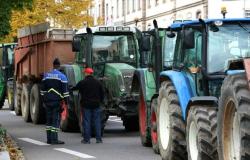At 72 years old, Michel Bovy is much more than just a resident of the upper Jura: he is an emblematic figure, a tireless volunteer and an accomplished sportsman. His deep voice, his strong Jura accent and his strong character leave an impression on all those who meet him.
A committed referee and a pillar of FC Haut Jura
Michel spent years refereeing District football matches, ensuring compliance for his home club, FC Bois-d'Amont. He refereed up to the authorized age limit, demonstrating unwavering commitment. Even today, he remains a key figure at FC Haut Jura, always ready to referee from the sidelines or roll up his sleeves for maintenance work on sports facilities.
Tireless skier, cyclist and runner
Michel is passionate about cross-country skiing. Always comfortable over long distances, he is a regular on the slopes of the Risoux forest. His passion for skiing is not limited to skiing. Competition organizers know they can count on him as a volunteer. Whether to help during an event or to lend a hand with trail maintenance.
“Several of us have created a group called the Old People of the Stadium for the preparation of the slopes and we are available to the preparers of the Tuffes stadium,” explains Michel, faithful to his team spirit. As a cyclist, he is part of a group called Limaces du Risoux. He has cycled 3,800 km this year, climbing the local roads with the much-vaunted “steel shanks” that sportsmen have. Passionate about trails, he even took on legendary races like the UTMB and the Diagonale des Fous, proving his extraordinary tenacity and endurance.
A man of convictions and loyalty
With his outspokenness and his strong opinions, Michel does not go unnoticed. A loyal supporter of the Saint-Etienne Greens, he is even more attached to this legendary club since one of the daughters, Sophie, took up residence in this city. His authenticity makes him a valuable friend to those around him. He maintains strong links, notably with the “Michel” group from Bois-d’Amont. All having the same first name, boys or girls, they meet each year at the end of September to celebrate their friendship around a friendly meal at Chalet Gaillard. Michel Bovy embodies the spirit of the upper Jura: a mixture of robustness, loyalty and solidarity.






